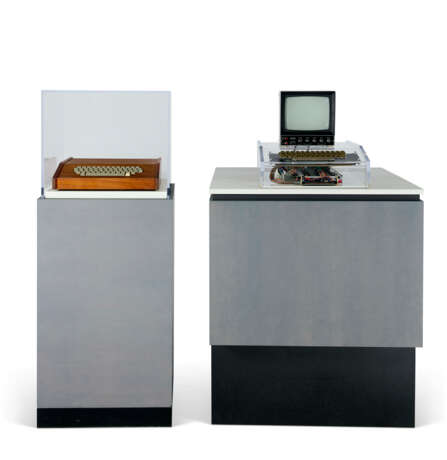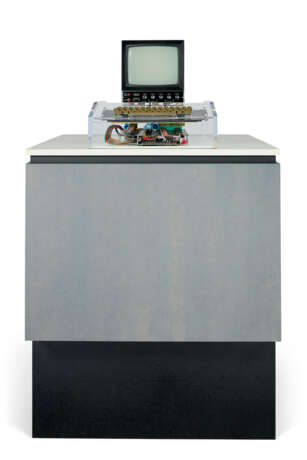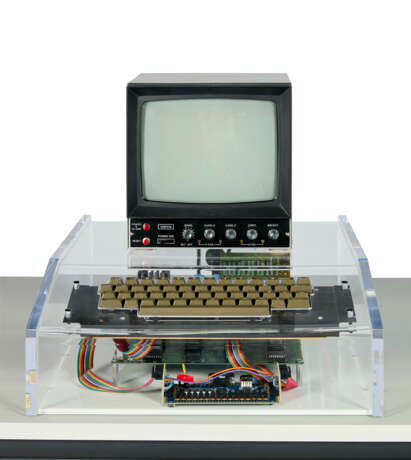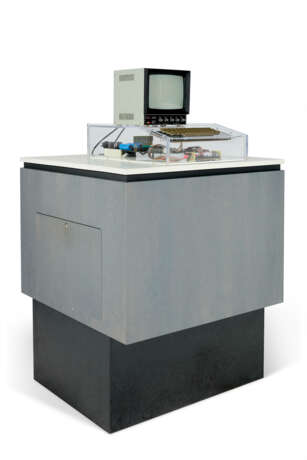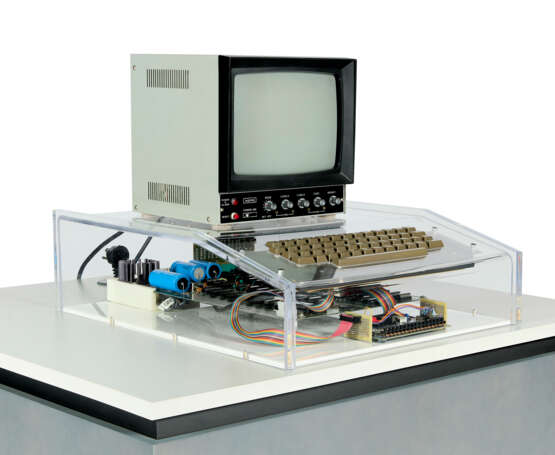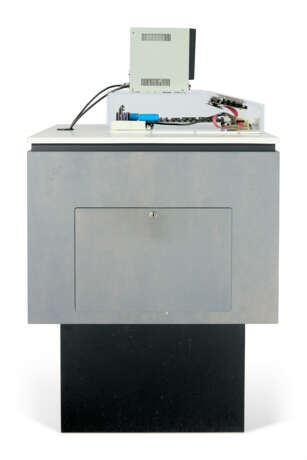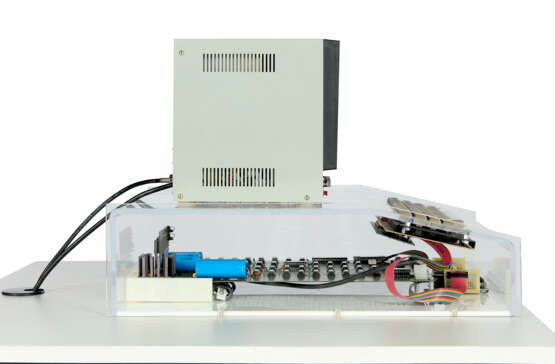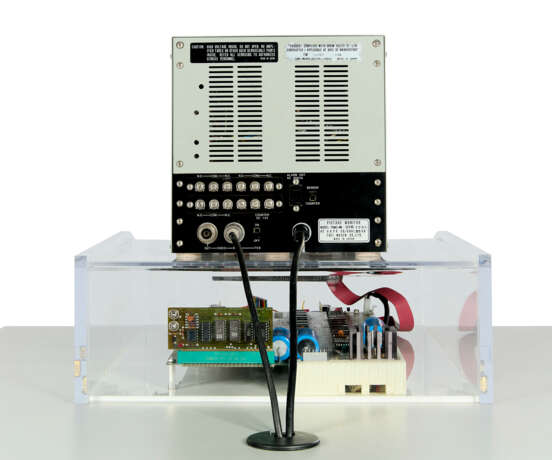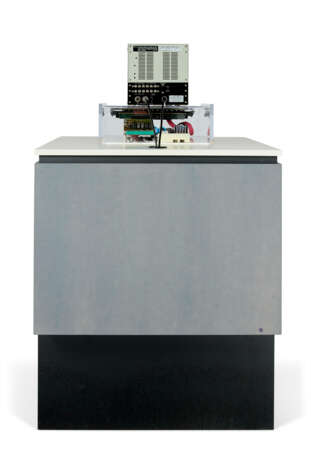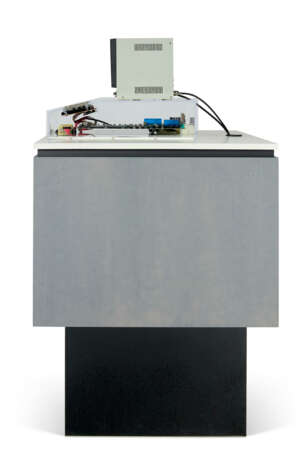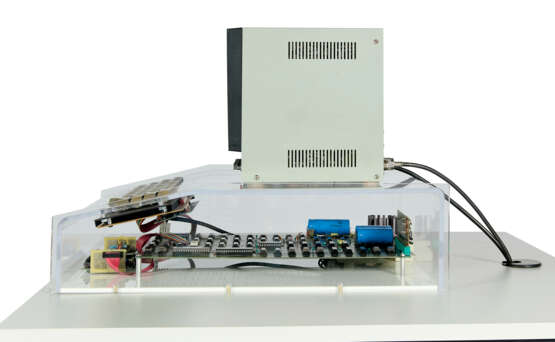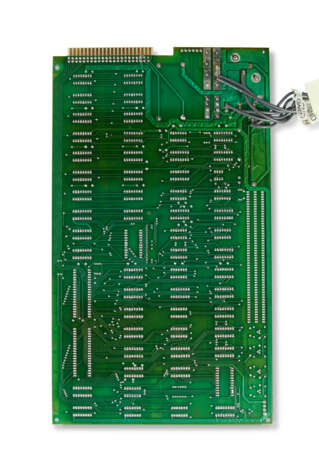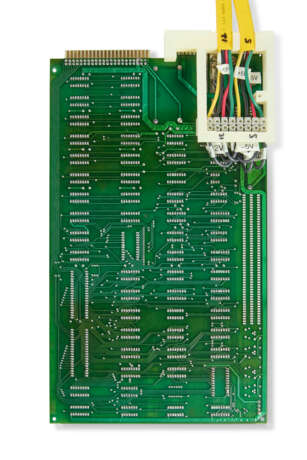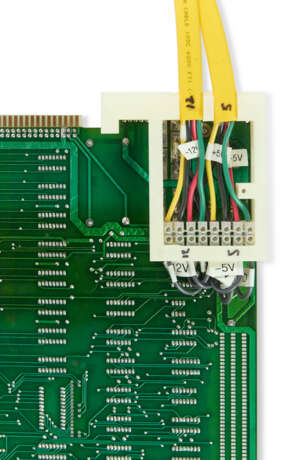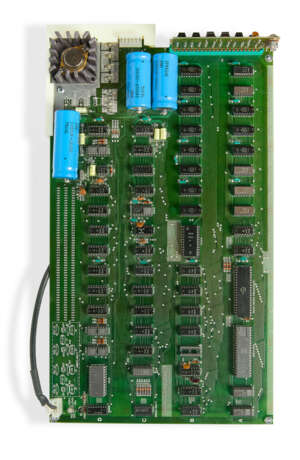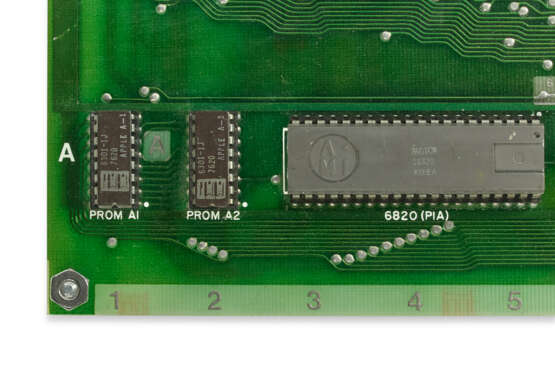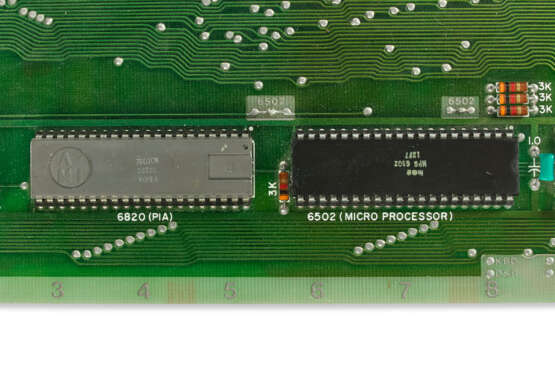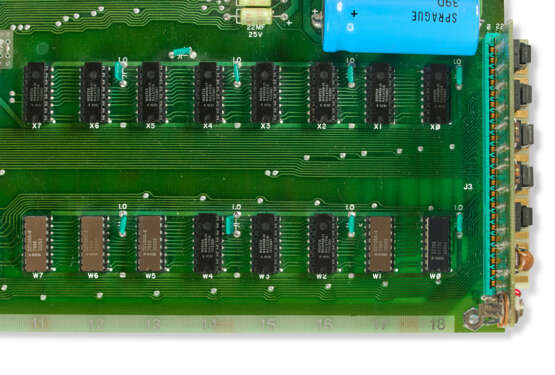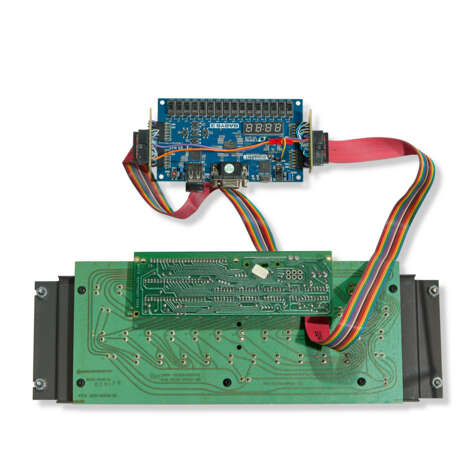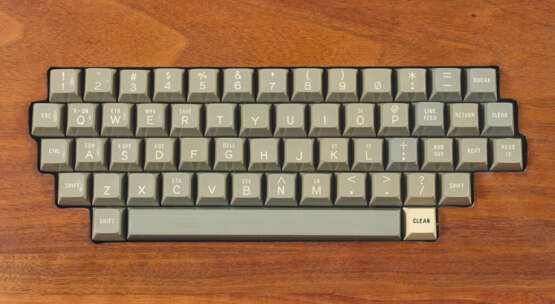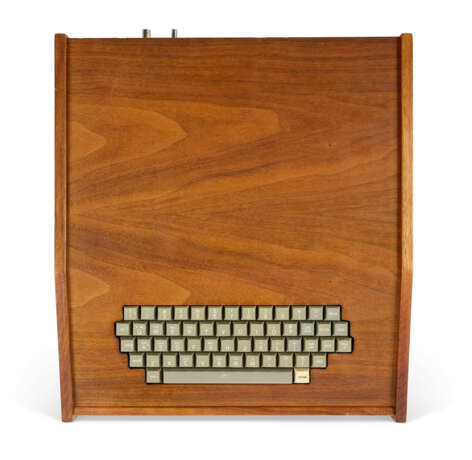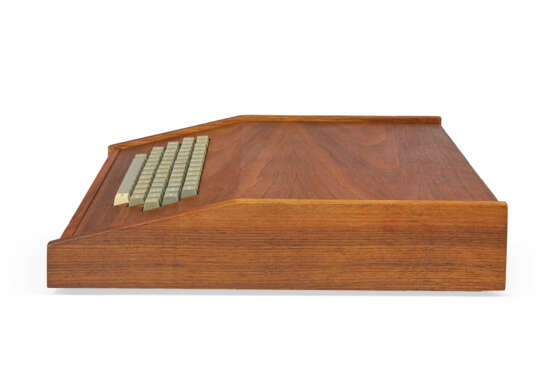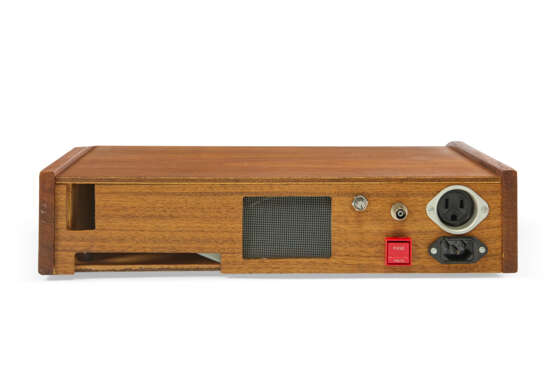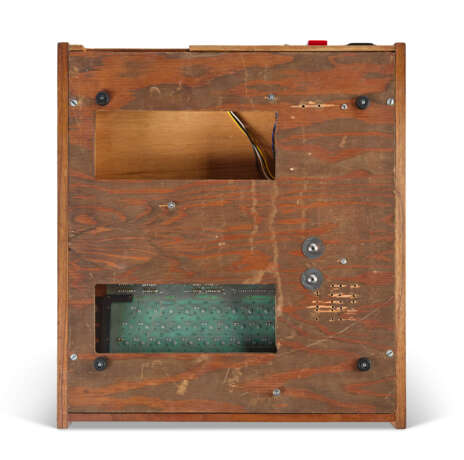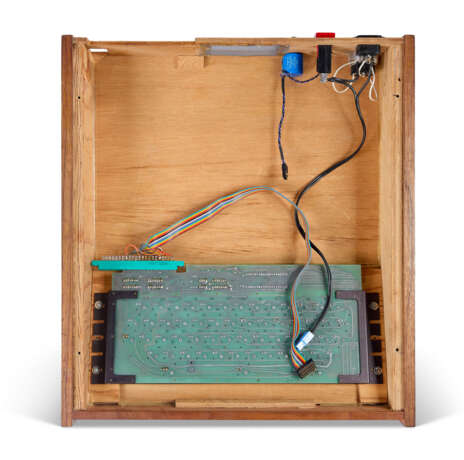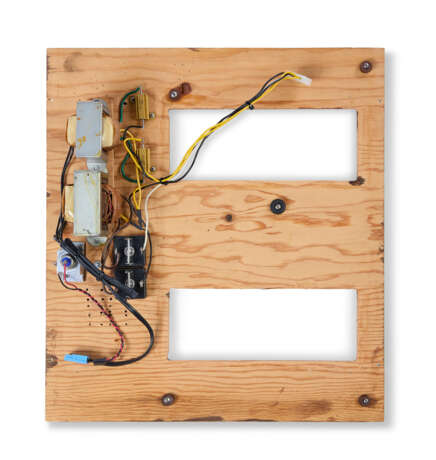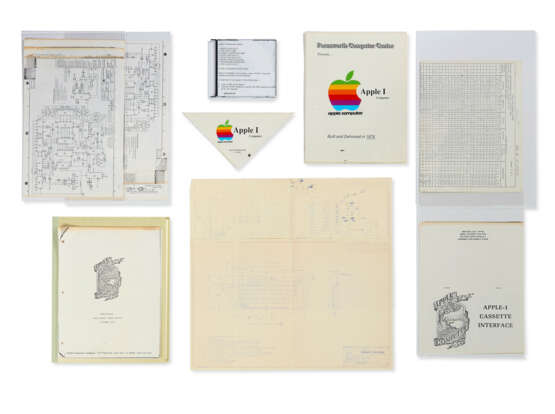ID 1291173
Lot 133 | AN APPLE-1 COMPUTER
Estimate value
$ 300 000 – 500 000
Comprising motherboard, cassette interface, housed in later lucite box, keyboard for Apple II, and [modern circuit board for autotype capabilities], picture monitor by Toei Musen co Ltd., no longer stored in but retaining its first contemporary koa wood casing with keyboard and four cassettes.
The first Apple computer – herald of the home computing revolution and of the internet age.
The Apple-1 computer is the first personal computer sold with a fully assembled motherboard. What began as the attempt by two techie friends to design and build a microprocessor became the first personal computer and launched Apple Computer. The perennially pioneering company would go on to define and redefine its industry – changing the lives of its millions of customers in the process– and ultimately become the world’s largest corporation. After introducing their new creation to a small group of like-minded friends at the Homebrew Computer Club in Palo Alto, California, Steve Jobs and Steve Wozniak were able to secure an order for 50 computers from Paul Terrell, owner of the Byte Shop, a small local retail outlet. The Apple-1 systems were sold without casing, power supply, keyboard or monitor, but offered a pre-assembled motherboard, something that put Apple far ahead of its competitors.
After securing that initial order, Jobs and Wozniak scrambled to find cash for the necessary parts, selling personal property (a VW van and HP-65 calculator, respectively) to finance the operation. Working furiously from the Jobs household, spread out through the garage, living room and even a bedroom, the young men and their friends and families built the motherboards by hand to fulfil the Byte Shop order, and made an additional small quantity to be sold directly to friends and members of the Homebrew Computer Club. Approximately 200 Apple-1s were built, but under half of those still exist, as recorded in the online Apple-1 Registry.
This example was sold to Ed Faber of Computerland Inc along with four cassettes of software, which Steve Jobs noted in his cover letter was unusual as they “do not send them all with each unit”. When later asked, Faber did not remember this unit (unsurprisingly given the volume of computers he would go on to sell) but the content of Jobs’ letter make it clear he was the first owner.
The computer was restored and brought into working order, with an added circuit board to demonstrate autotype when on display.
The lucite box and monitor measuring 14 in. (35.6 cm.) high, 201/2 in. (52 cm.) long, 153/4 in. (40 cm.) wide
| Manufactur: | Apple |
|---|---|
| Auction house category: | Instruments |
| Manufactur: | Apple |
|---|---|
| Auction house category: | Instruments |
| Address of auction |
CHRISTIE'S 20 Rockefeller Plaza 10020 New York USA | ||||||||||||||
|---|---|---|---|---|---|---|---|---|---|---|---|---|---|---|---|
| Preview |
| ||||||||||||||
| Phone | +1 212 636 2000 | ||||||||||||||
| Fax | +1 212 636 4930 | ||||||||||||||
| Conditions of purchase | Conditions of purchase | ||||||||||||||
| Shipping |
Postal service Courier service pickup by yourself | ||||||||||||||
| Payment methods |
Wire Transfer | ||||||||||||||
| Business hours | Business hours
|
